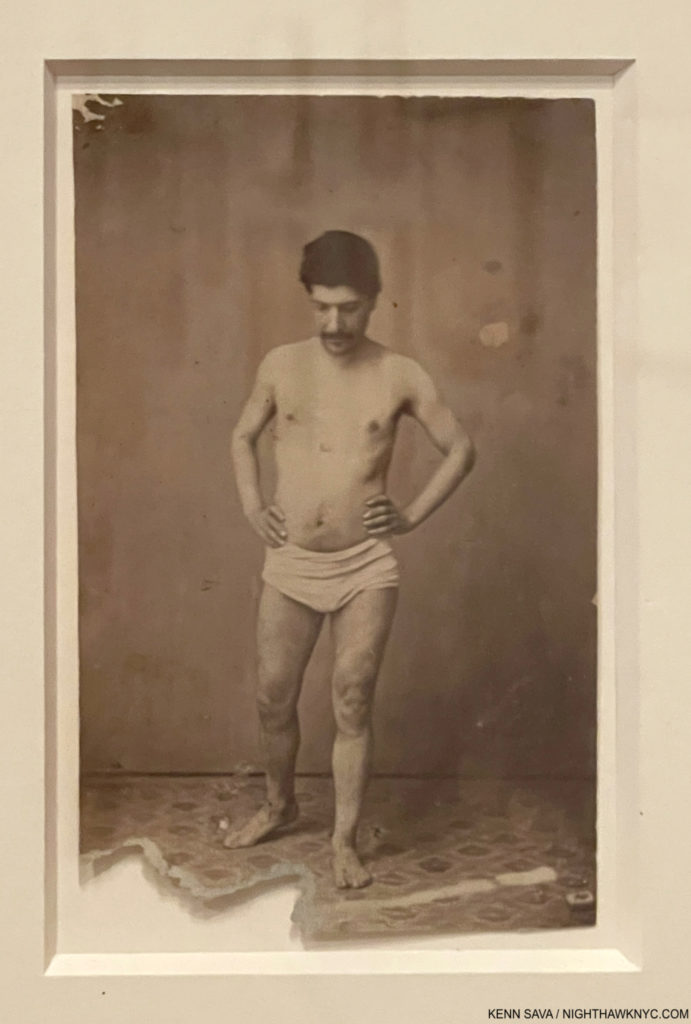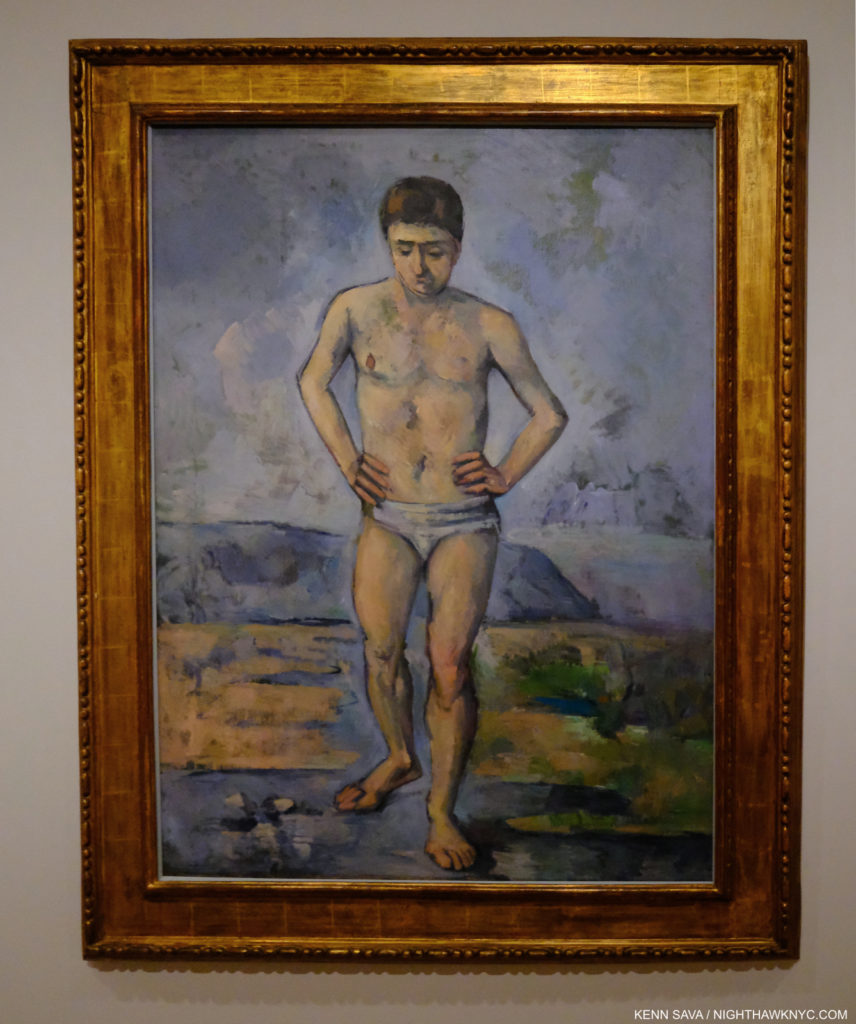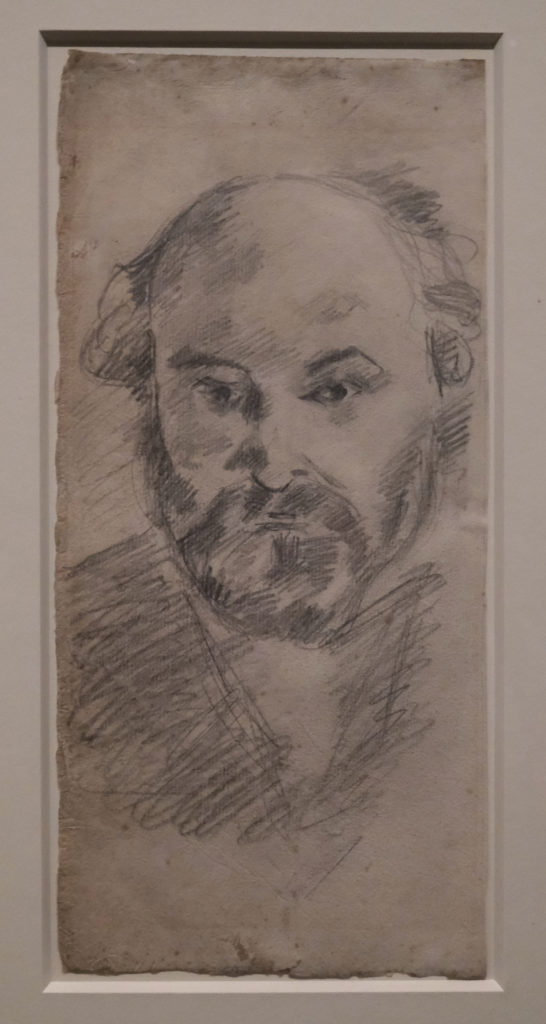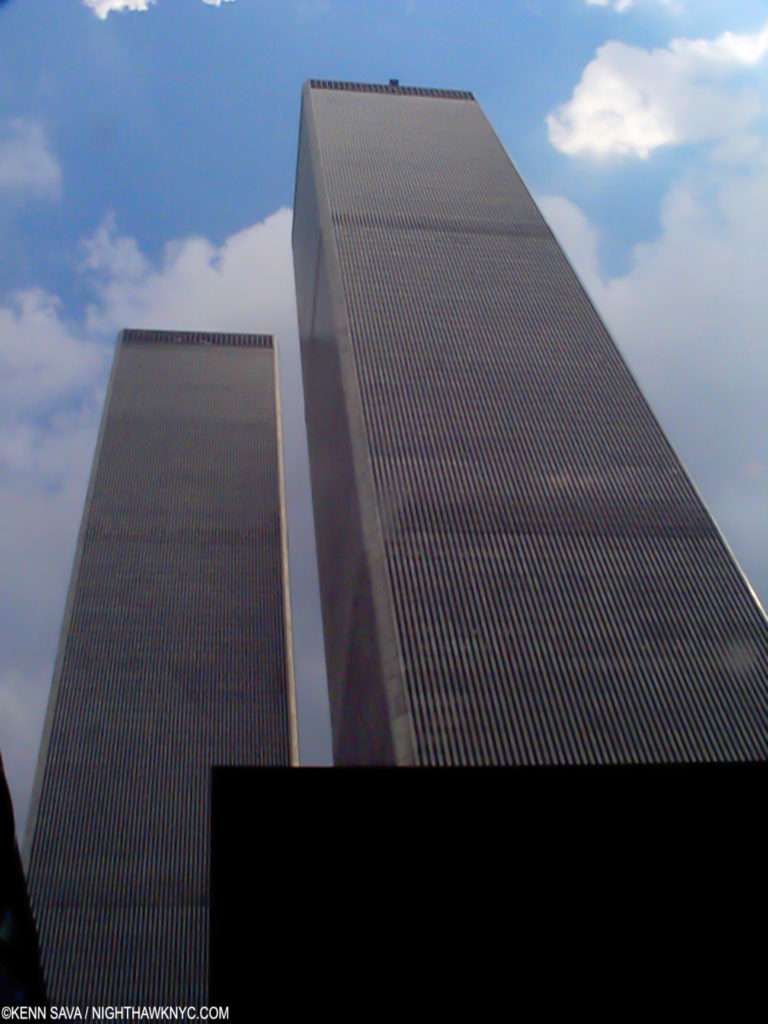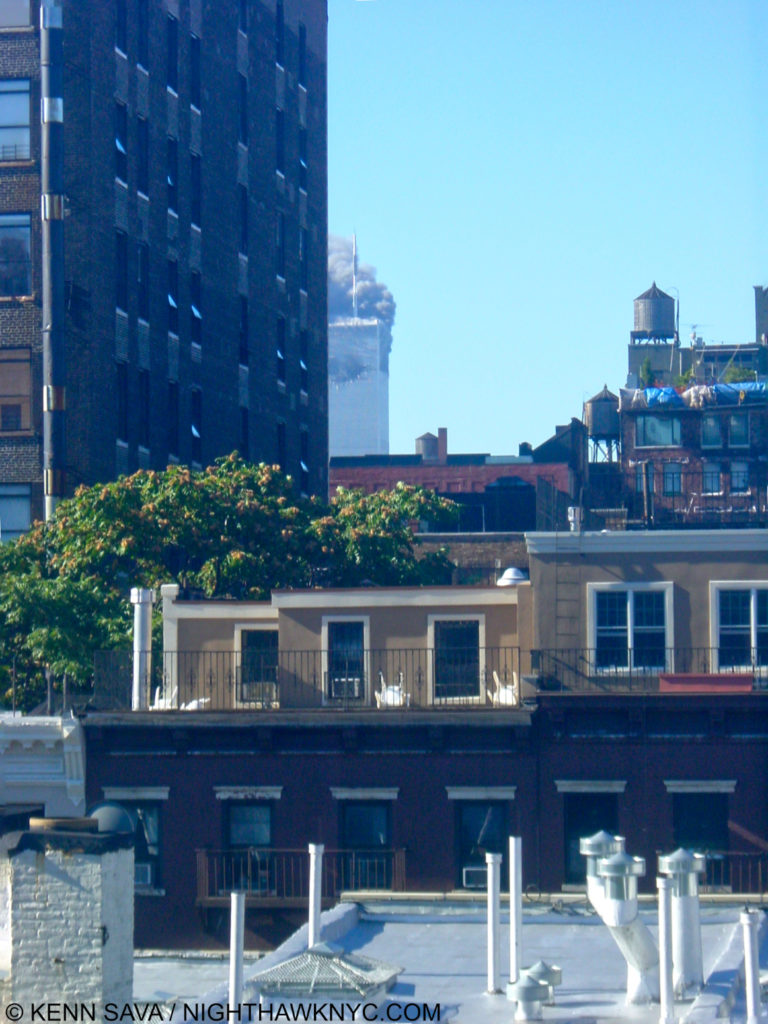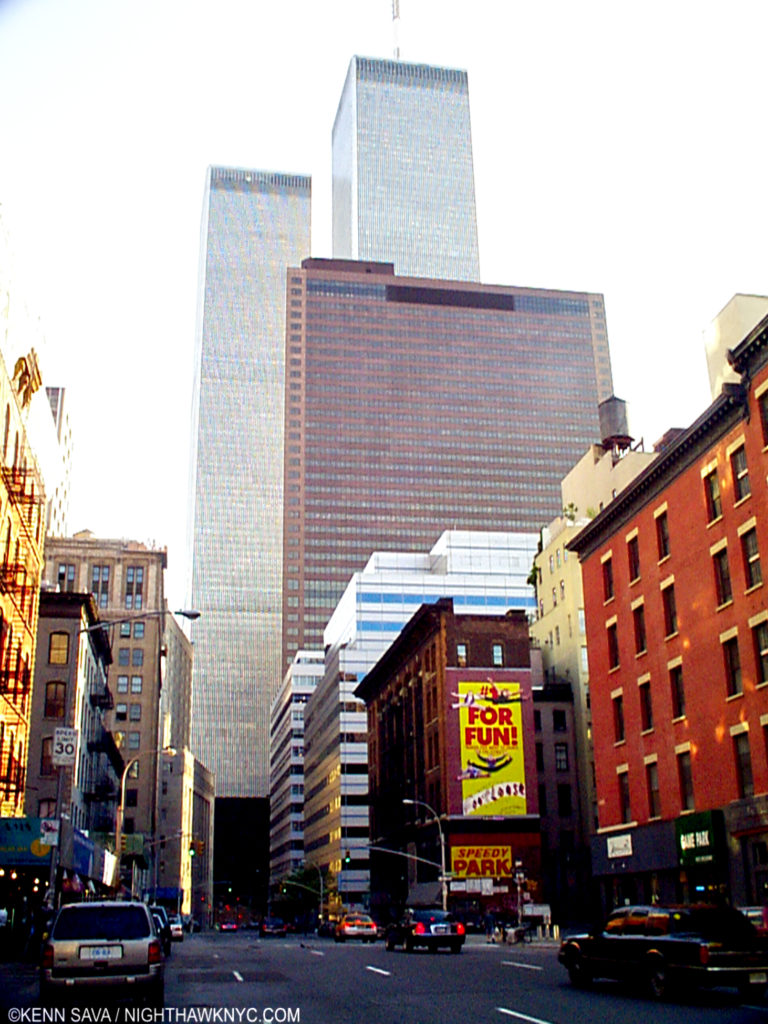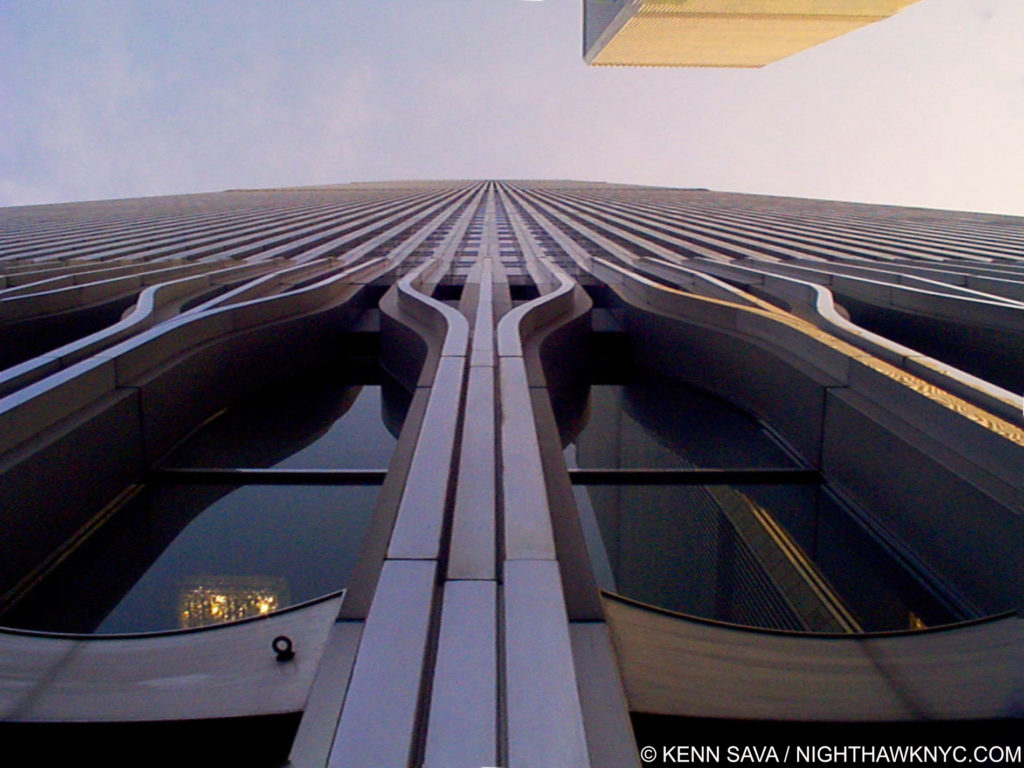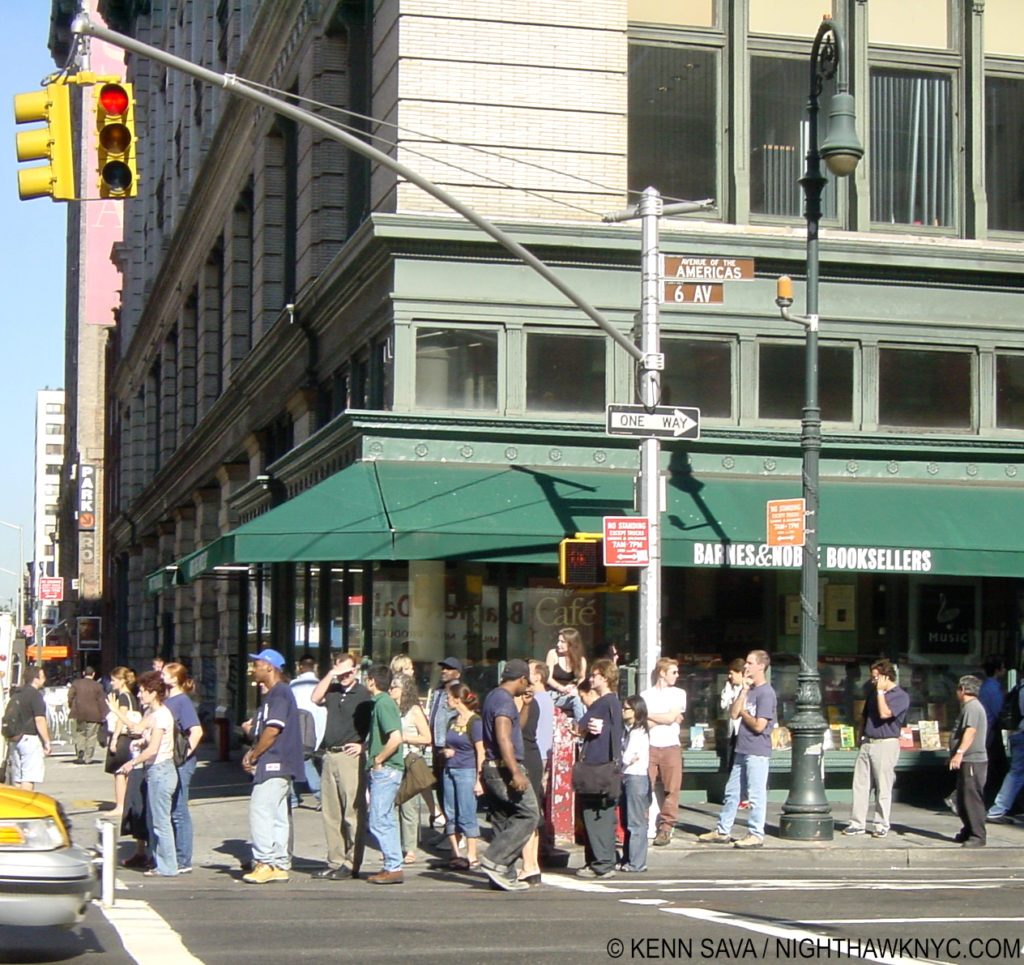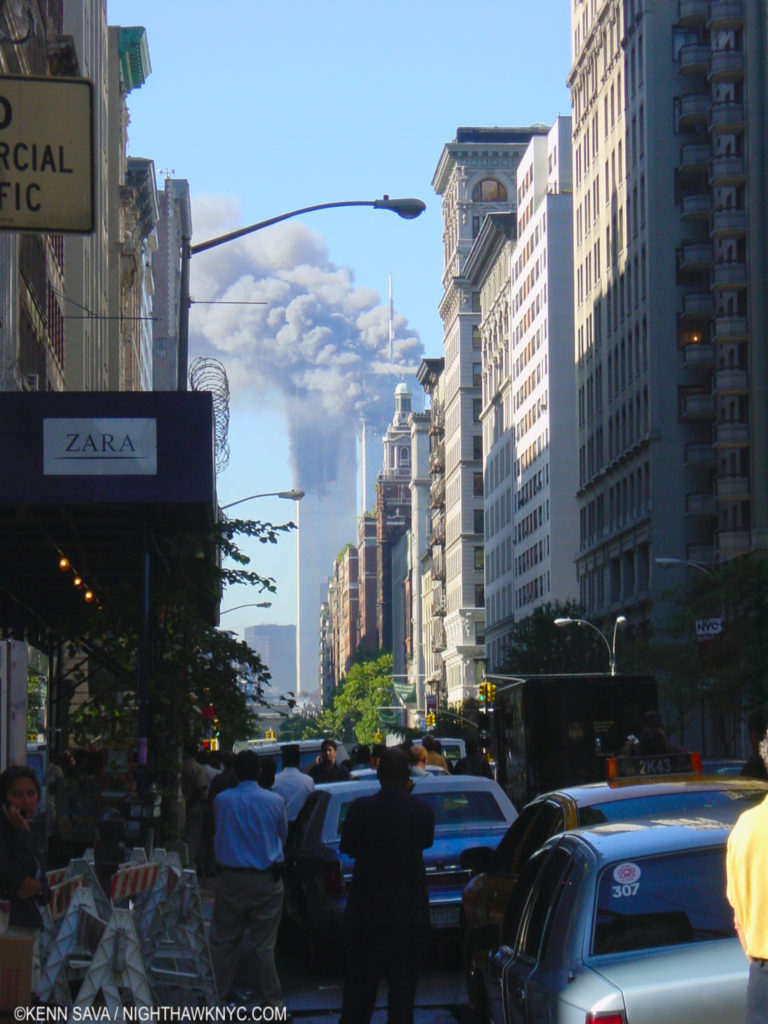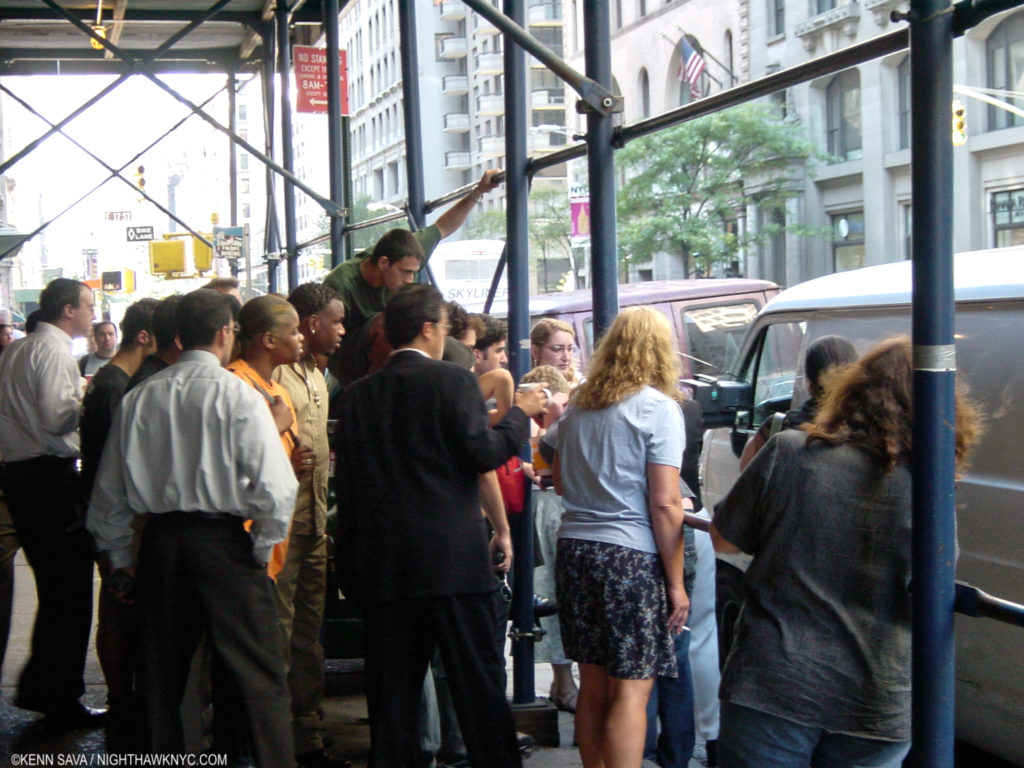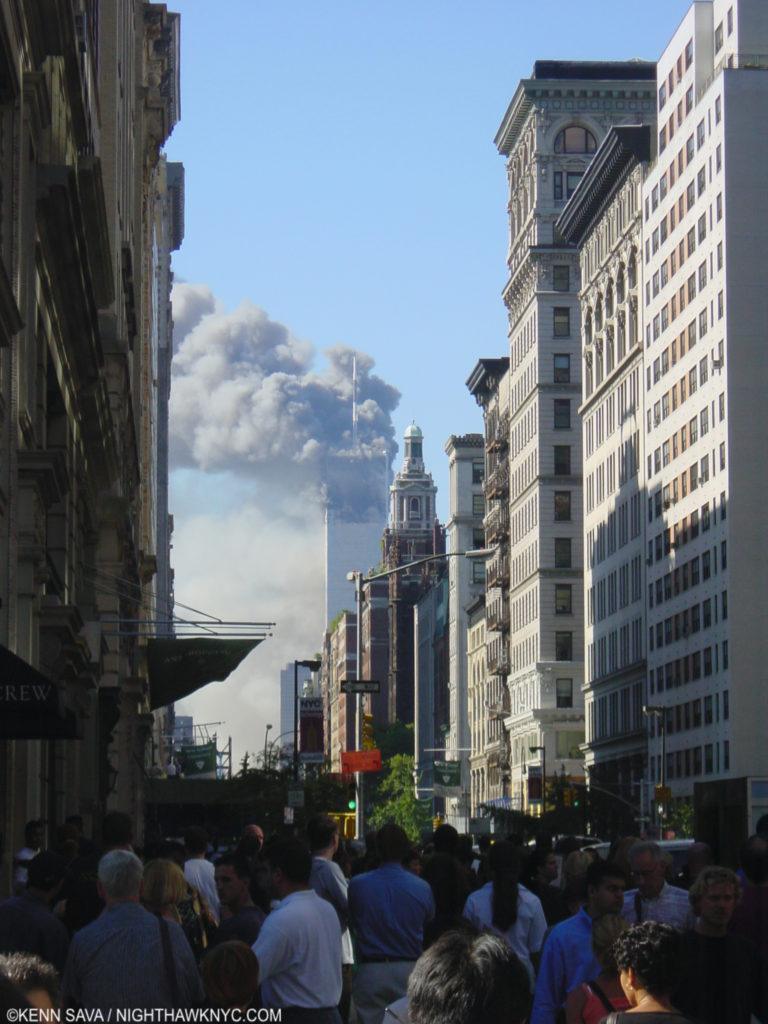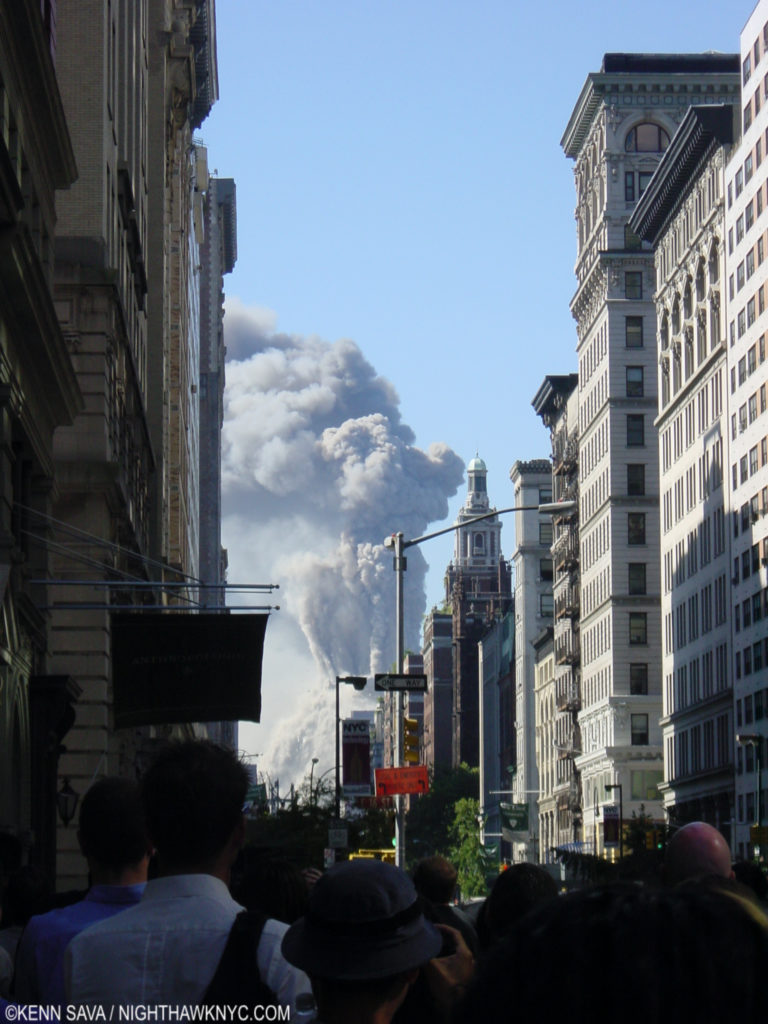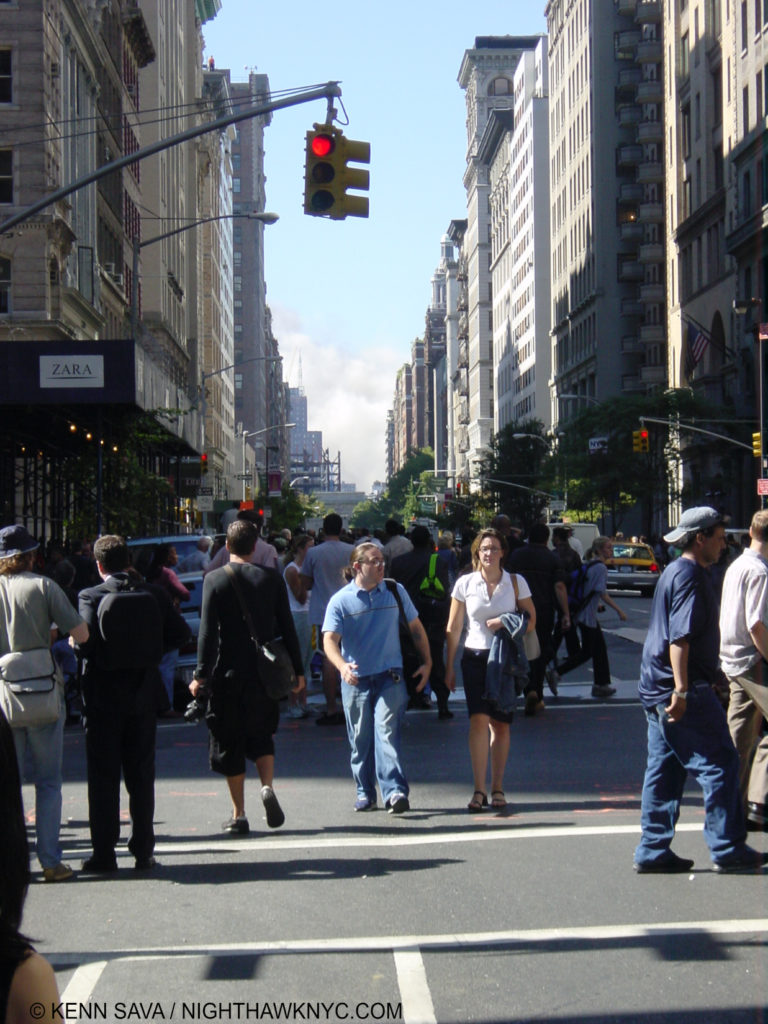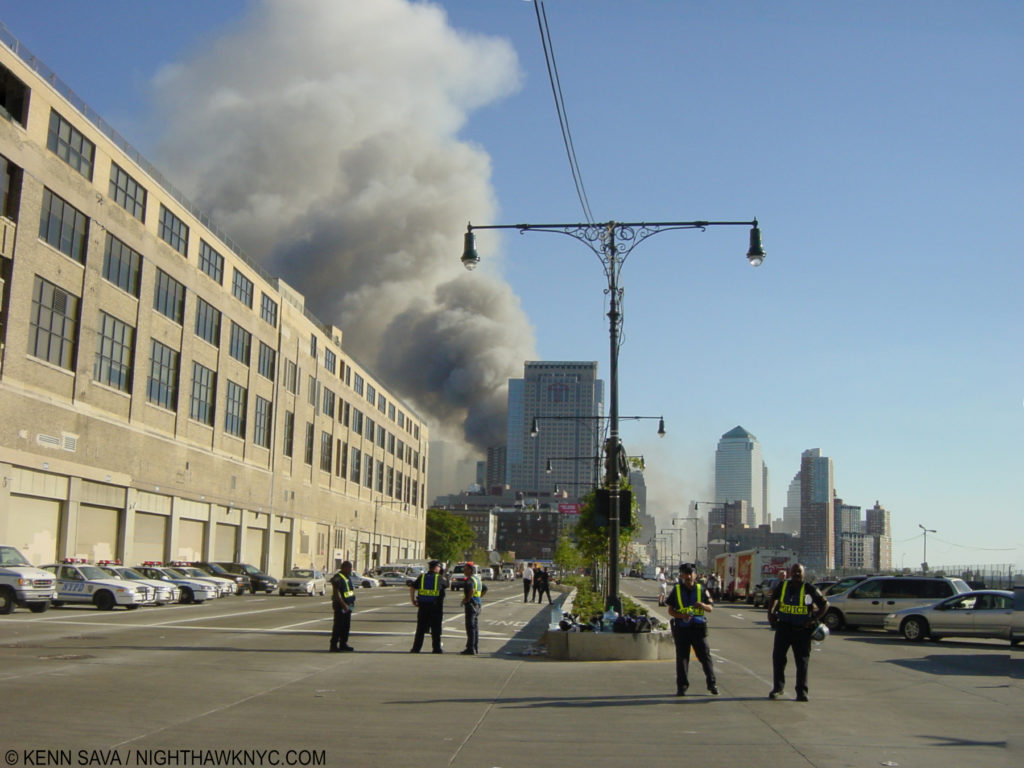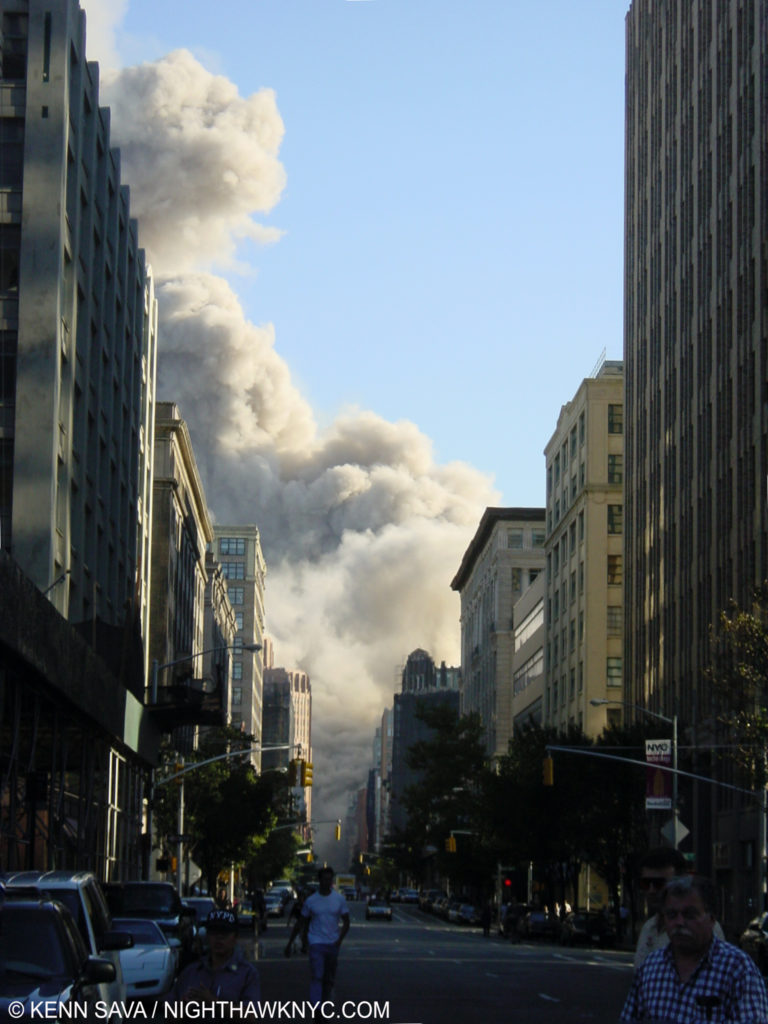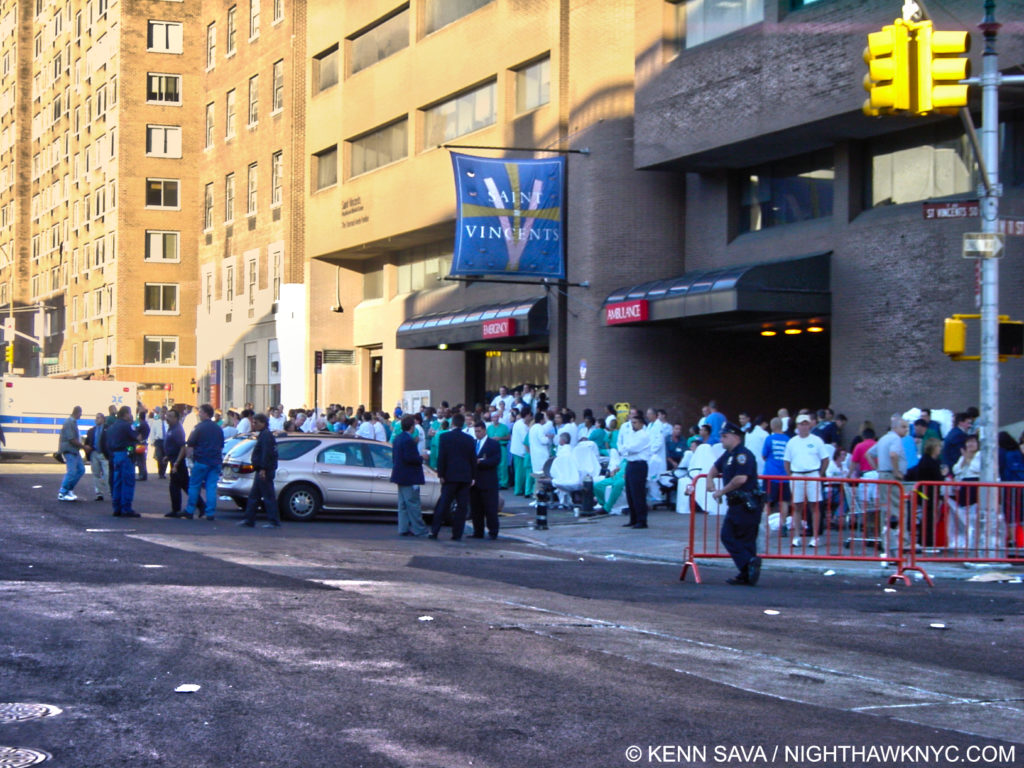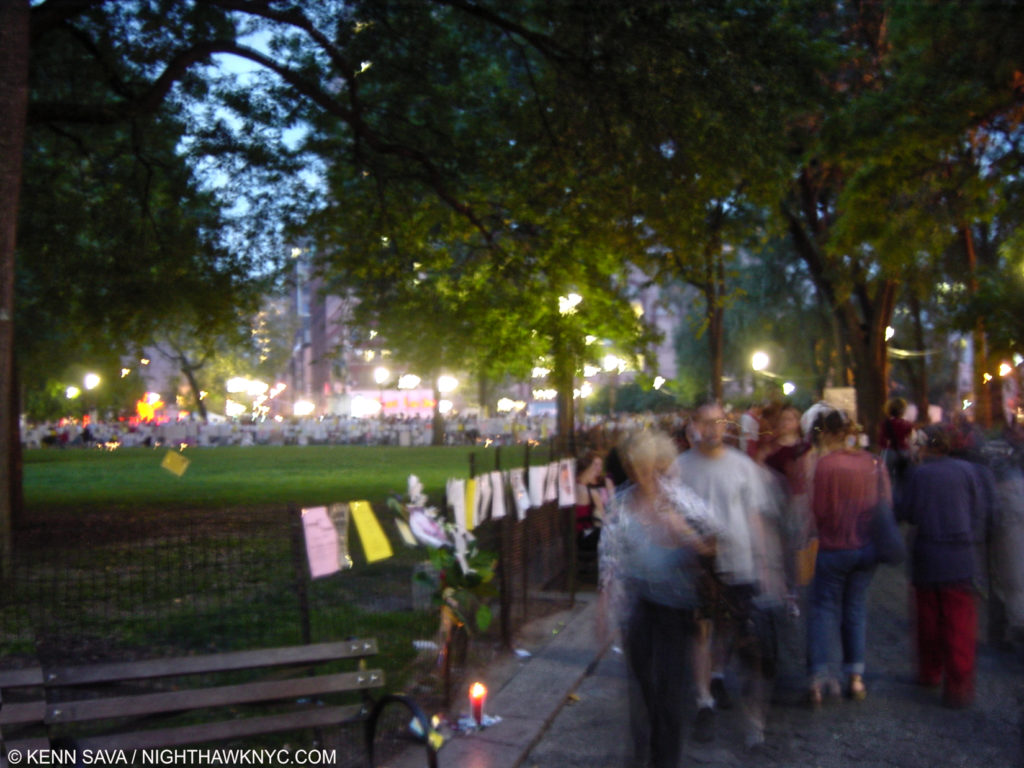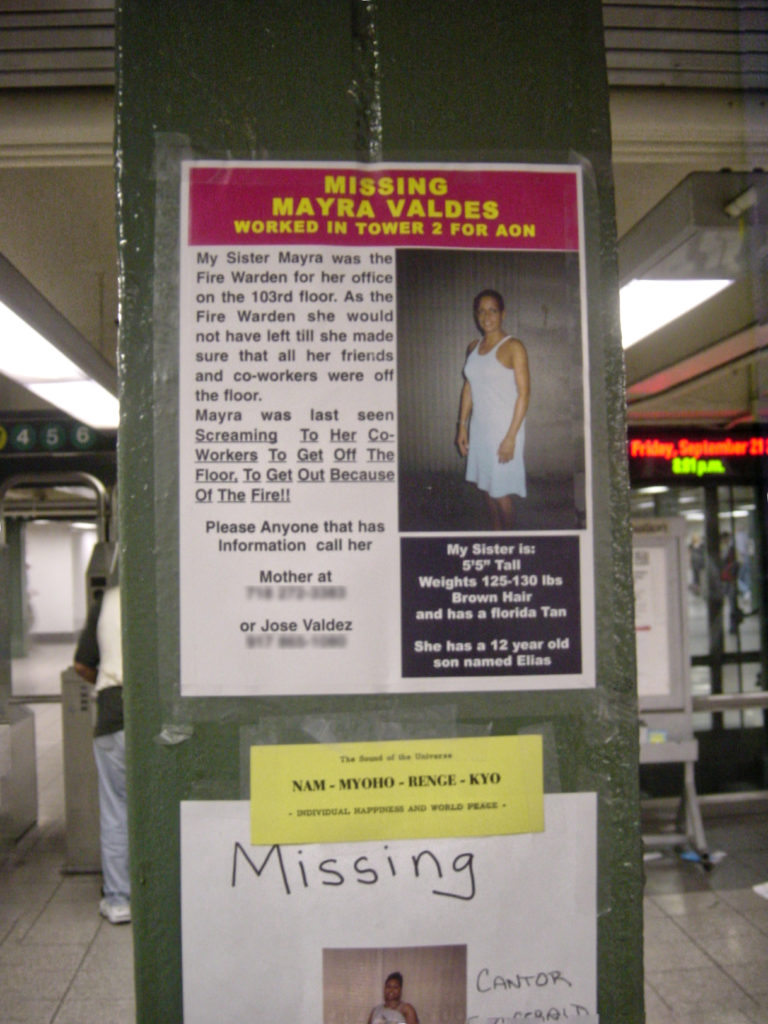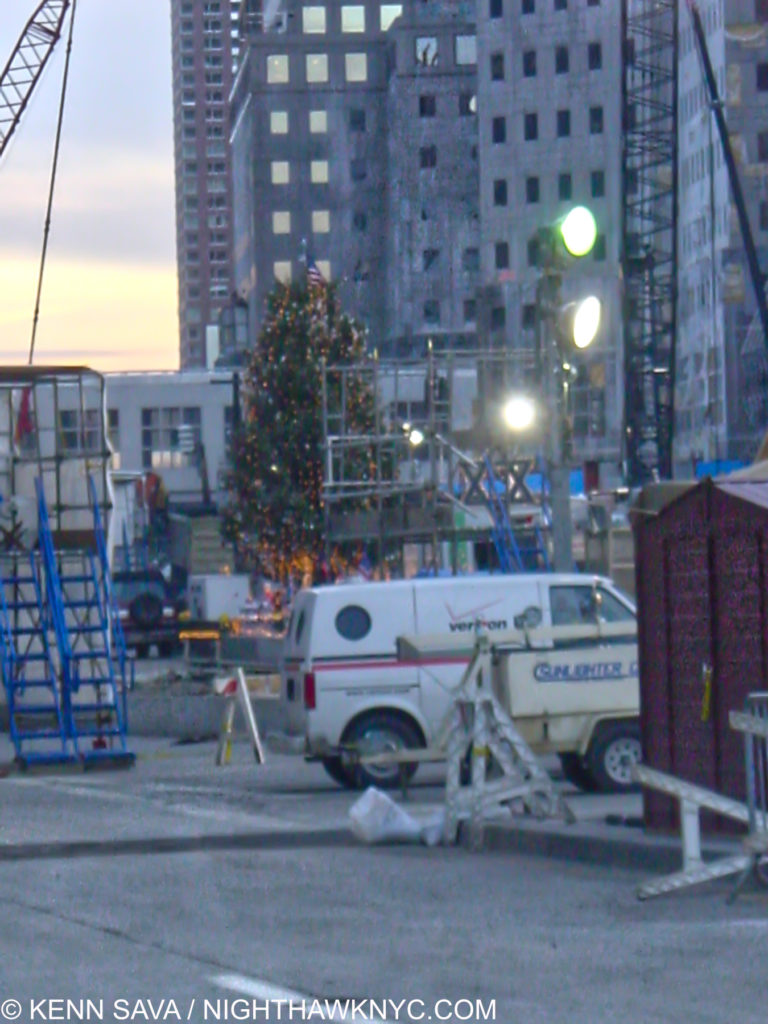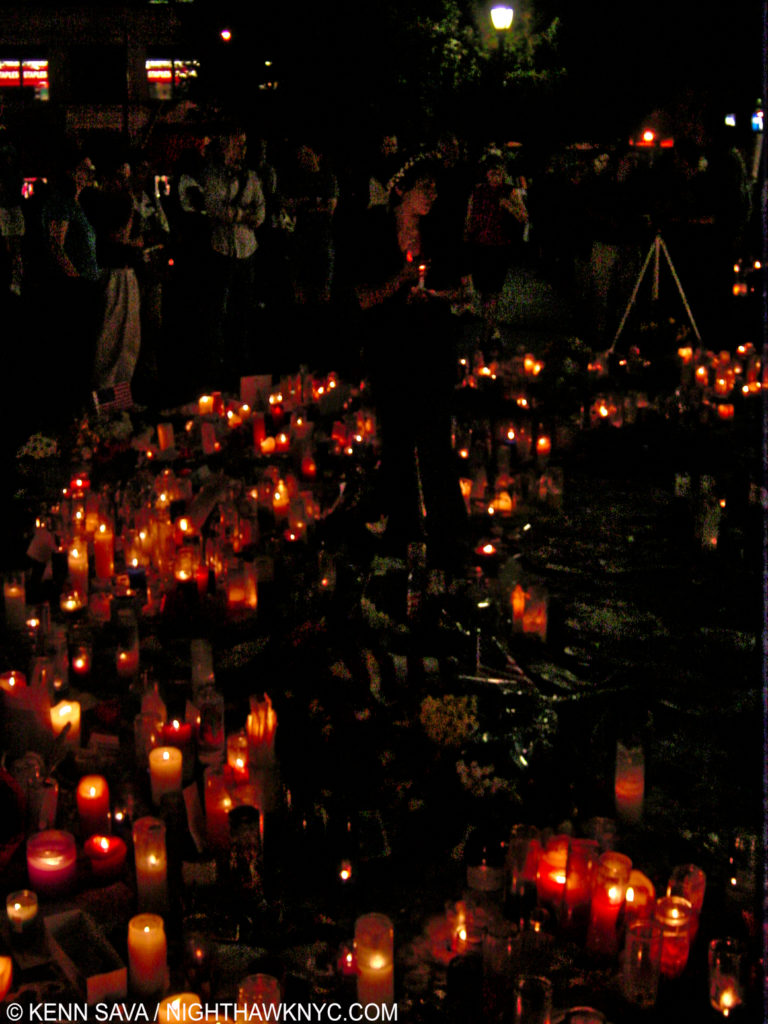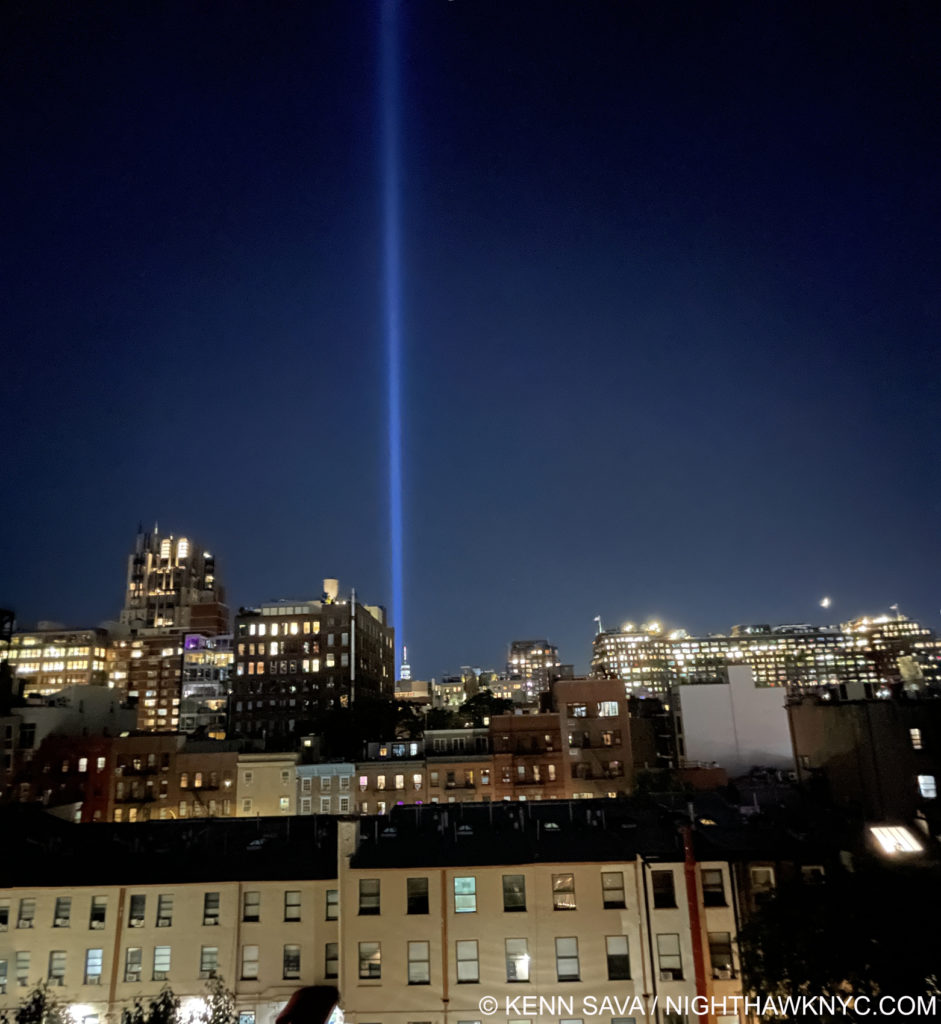Written & Photographed by Kenn Sava
“I will astonish Paris with an Apple,” Paul Cézanne said. And, he did.
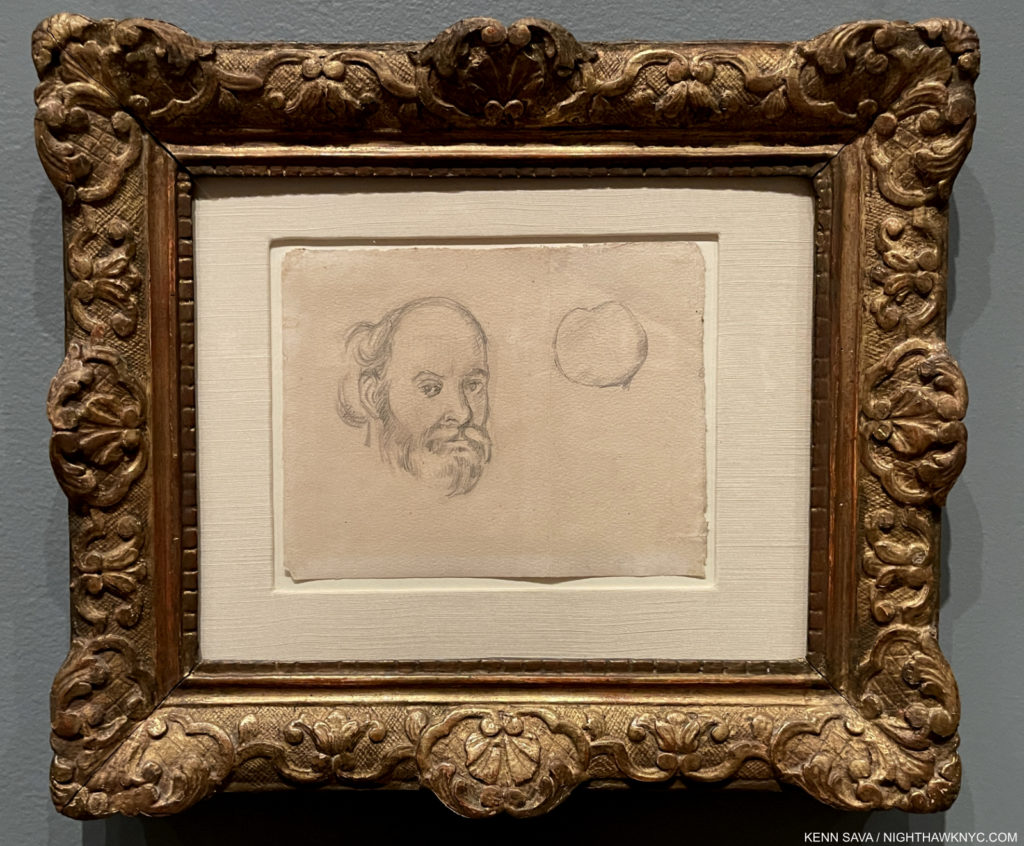
What came first? The Artist, or the apple? Many Painted apples & fruit before Cézanne. None created a revolution in Art with them. Self-Portrait and Apple, 1880-84, Pencil on paper. The Cézanne quote above comes from the wall card for this Drawing. It goes on to say the work “establishes an equivalency between the Artist’s head and the fruit he so often depicted.”
Ways of seeing and the Art of Drawing are two of my bigger interests in Art. Both are combined in the landmark Cézanne Drawing show which closed this week at MoMA, and was, most likely, a “once in a lifetime” show. I’ve never heard of anything close to the 250 works on paper on view in it by the French master being exhibited anywhere previously. As big a revolution as his daring approach to Art, most widely known to this point through his hugely influential Paintings, his Drawings and works on paper have been seldom exhibited. Possibly their fragility and light-sensitivity has something to do with that, though the pieces on display seemed to be in remarkably good condition. As a result, they are far lesser well-known even 115 years after the newest of them was created. Yet they take things even further, and reveal more of his remarkable & unique vision, than even his remarkable Paintings, in my view.
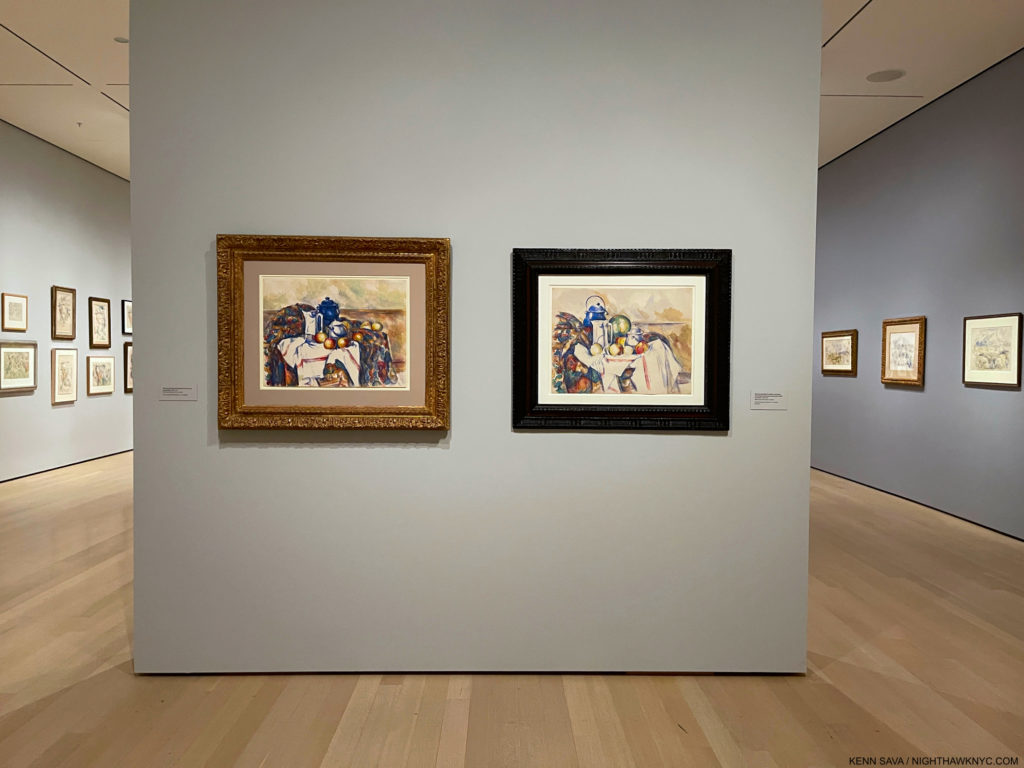
One of those shows I’ll long walk around in my mind, continue to think about, and be inspired by. Late masterpieces, Still Life with Blue Pot, left, Still Life with Milk Pot, Melon and Sugar Bowl, right, both 1900-6, Pencil and watercolor on paper.
As a young Musician or Artist, many pupils are taught “Master the rules, first. Then, you can break them.” In Art, the theory is to gain a firm grounding in technique, composition, color, line and form, to have something to build your own style on. In Cézanne Drawing we get to follow his evolution & creative journey over half a century.
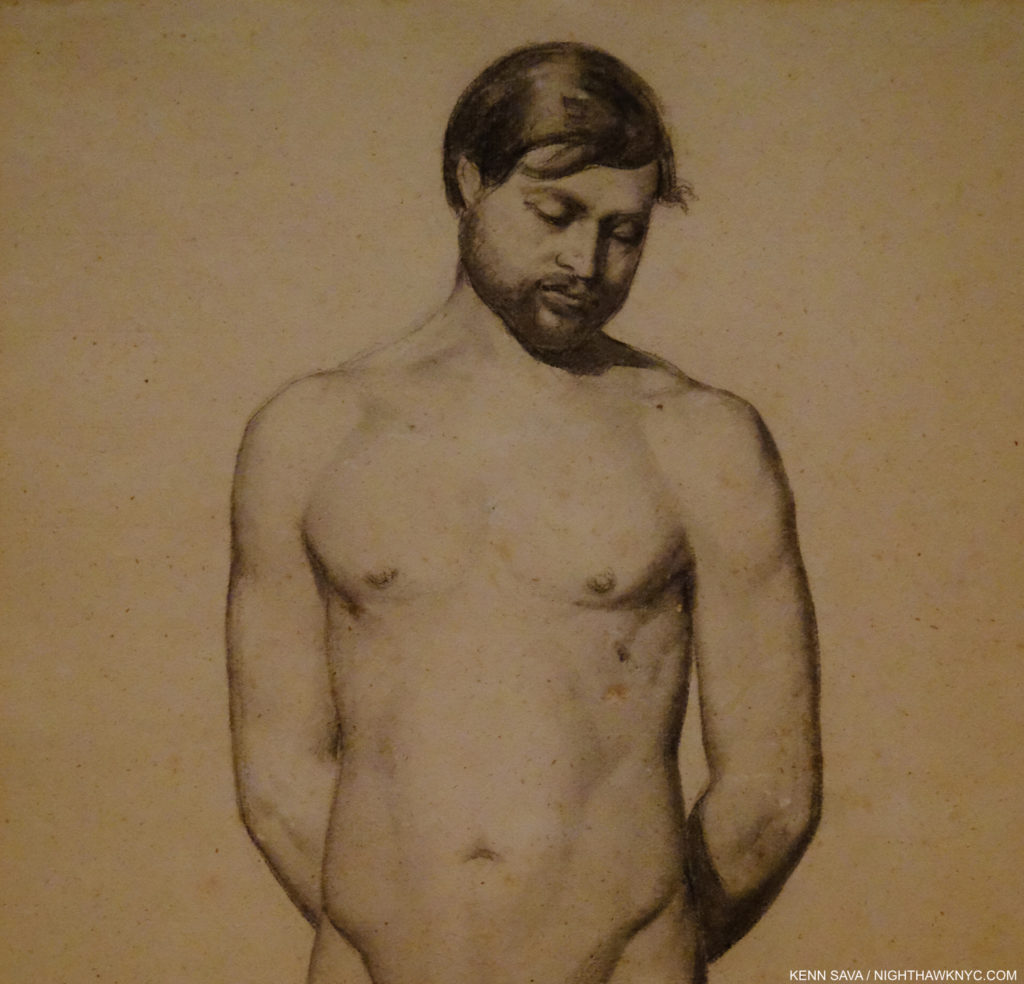
Umm…yeah he could Draw. From early on, as seen here. Detail of Standing Male Nude: Academic Study, 1862, Pencil on paper.
Cézanne applied to attend the Ècole de Beaux Arts in Paris, though he was rejected. He proceeded to take lessons at the Atelier Suisse, where they were offered free, a studio Courbet studied at. Early critics, including the great James McNeill Whistler, thought he couldn’t Draw. Evidence of his studies of the classical tradition were on display and show otherwise.
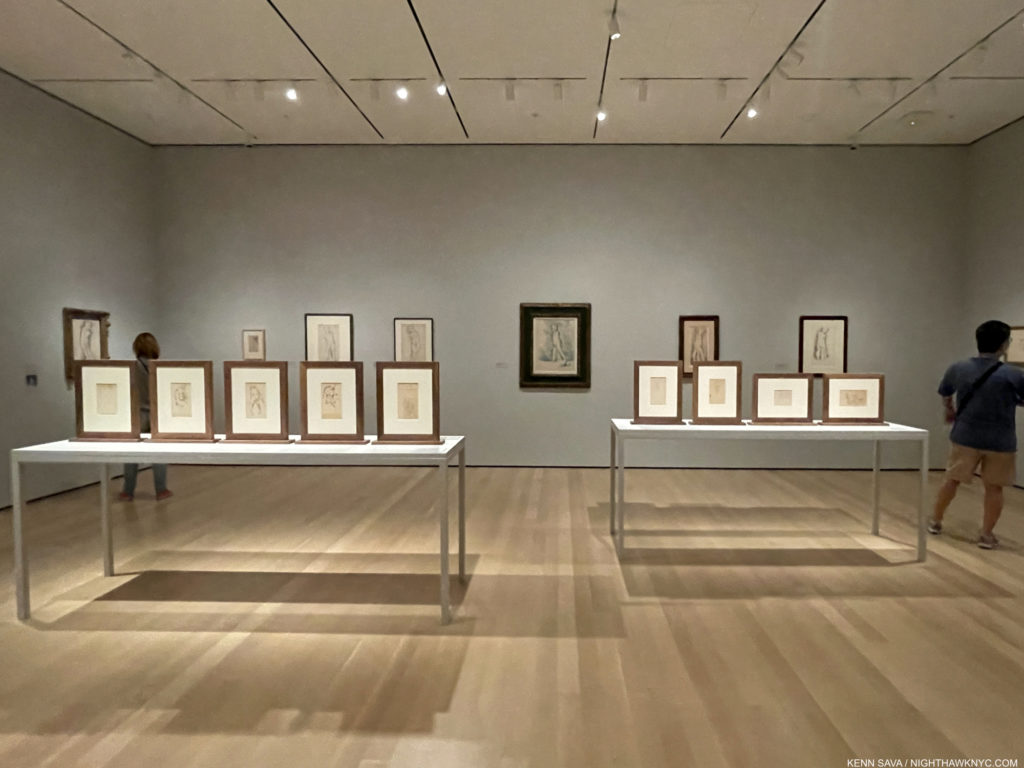
A gallery full of Cézanne’s figure studies contains numerous works taken from his Sketchbooks that belie his daily dedication to the craft & Art of Drawing throughout his life.
He drew every day for much of the rest of his life. In the next gallery, we are treated to numerous examples of his Sculpture studies. Ah…Drawing Sculpture. Something many students, including this one, get caught up in. Its allure never lessened for Cèzanne.
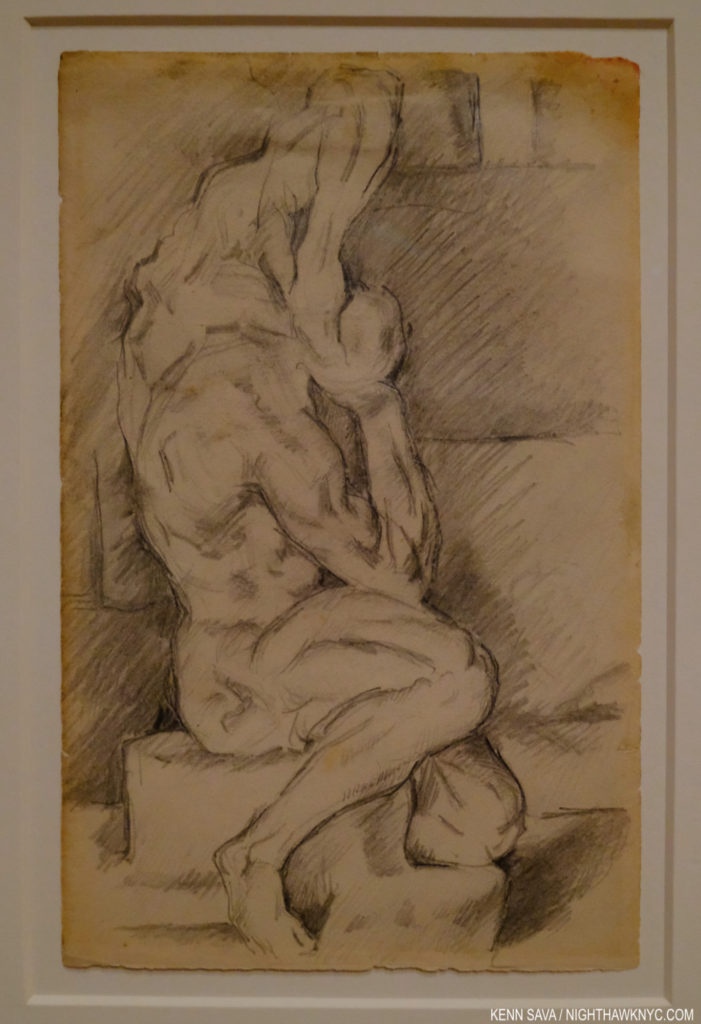
After the Ecorche of Michelangelo, 1881-4, Pencil on paper, from a Sketchbook. Cèzanne kept a plaster cast of this work in his studio.
Per the wall card- “According to a friend…’To the last day of his life, every morning as a priest reads his breviary, he spent an hour drawing Michelangelo’s plaster figure from every angle.”
And here it is-
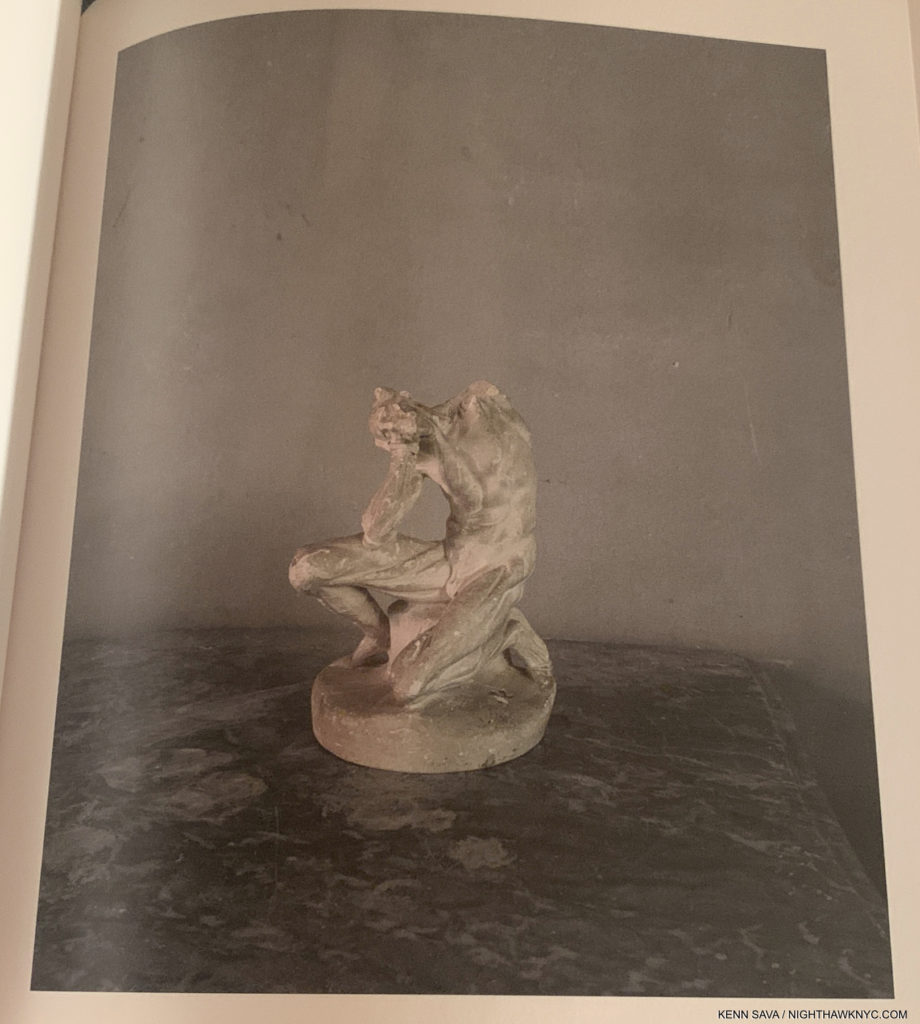
Cèzanne’s personal plaster cast of Michelangelo’s Ecorche, seen in Cezanne’s Studio in 2017! Photograph by Joel Meyerowitz from his PhotoBook, Cezanne’s Objects, 2017.
Soon he was Drawing like this-
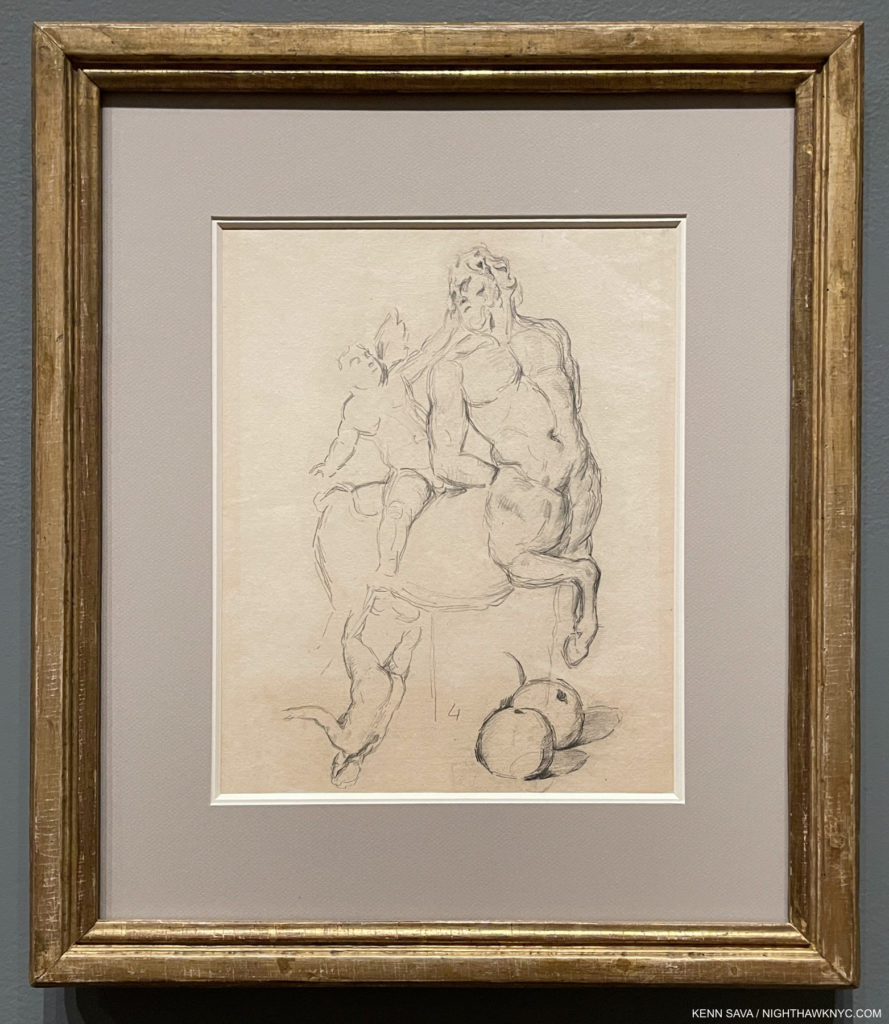
Page of Studies, including a Centaur after the Antique, Pencil on laid paper, 1897-82. A drastic departure from the academic Standing Male Nude, shown earlier. No part of any of this is defined by the Artist with one line. His future is coming.
He took what he learned, and used it as a jumping off point. He began to loosen up his approach. Much experimentation followed, as we see as this very large show progresses, until “he had discovered his own personality,” as Cézanne scholar Roger Fry put it 1.
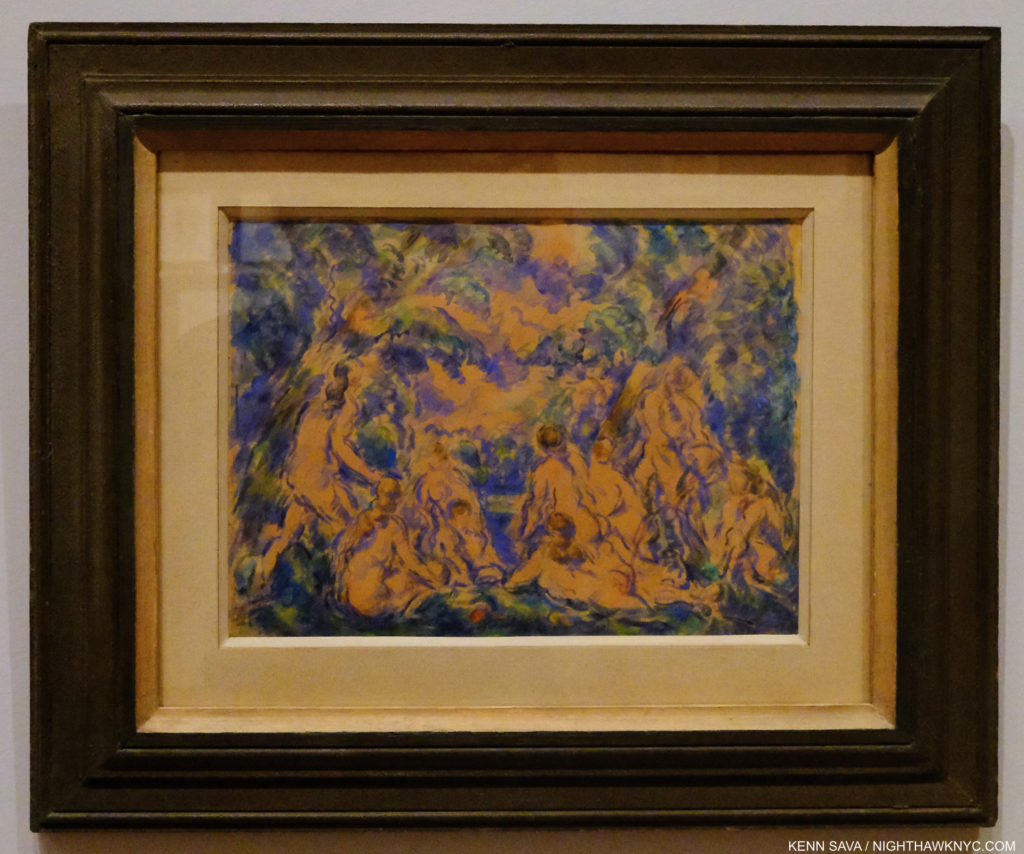
Bathers, 1900-06, Watercolor on wove paper, page from a Sketchbook that measures 7 1/16 by 9 13/16″. This late work shows how far he took his figure Drawing. Though the figures almost seem to dissolve right in front of us, then almost seeming to be vibrating en masse from a short distance. Still, the composition miraculously holds wonderfully together
He developed a style of Drawing the figure that used multiple lines to “hone in” on the form, as seen in the Page of Studies with the Centaur, just shown, and, even more radically, the Bathers, here. He called his style couillarde (ballsy)2, indicative of his “attacking” approach to every aspect of his Art. Like his early subjects seen in the first gallery.
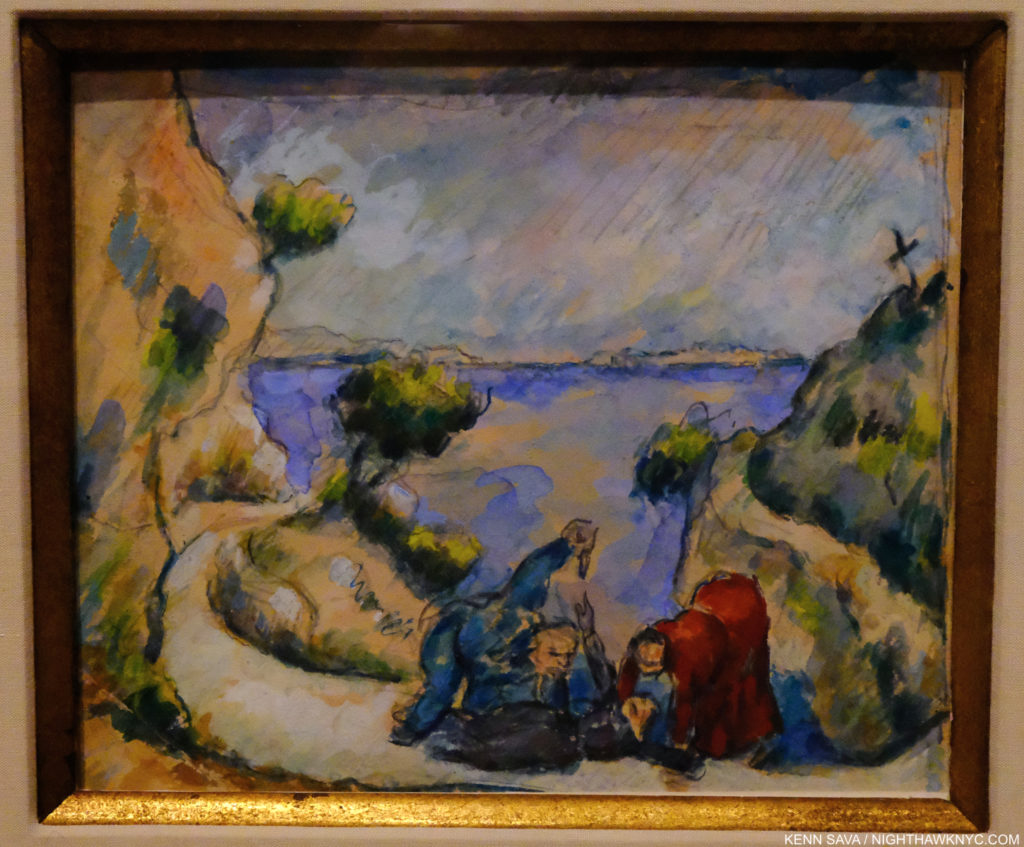
The Murder, 1874-75, Pencil, watercolor, and gouache on paper. In this small work (5 3/4 by 6 7/8 inches), the knife is held high amidst an idyllic landscape based on a real place, with an ominous cross lurking above.
Murder, abduction, rape, orgies, Drawn with passion, or Painted in oils at the time with a palette knife, all seemed created to grab the attention, shock and horrify. His whole career can be seen as one long attack on the rules, tradition and the status quo in Art.
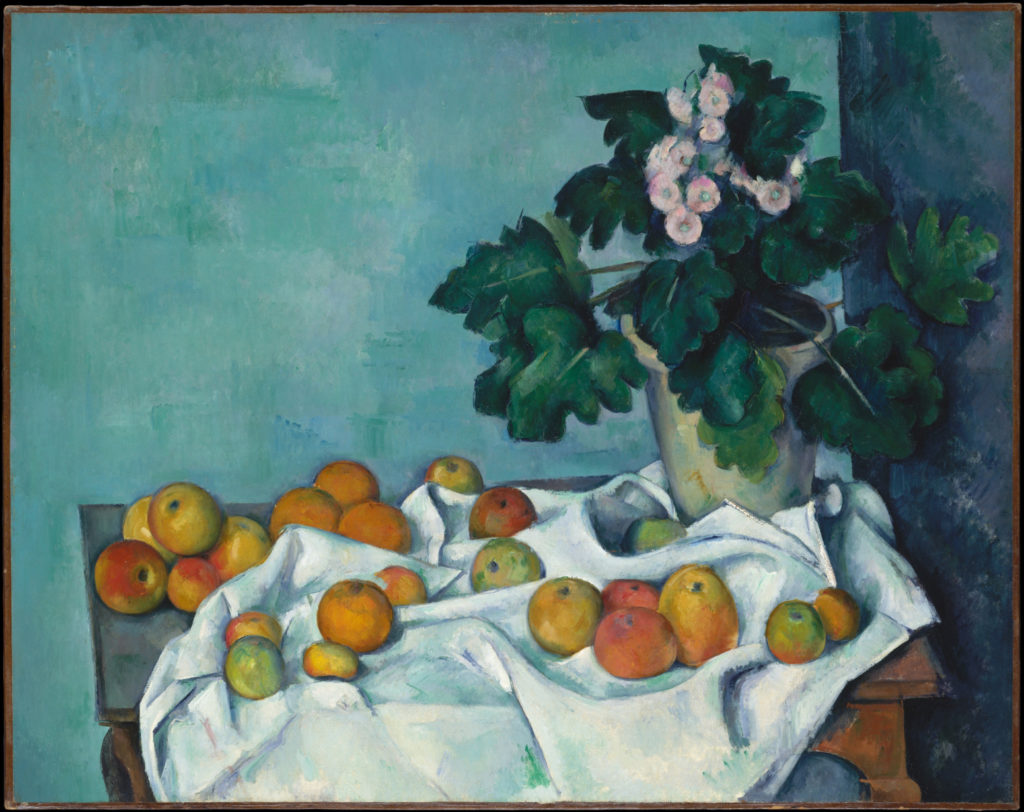
Still Life with Apples and a Pot of Primroses, ca. 1890, Oil on canvas, in The Met, and not included in Cèzanne Drawing. Met Photo.
Along with all of that, there is that eye, the way he sees things, and that unfailing sense for, and mastery of, color he had all along. Over time, his later Paintings achieve an almost surreal polish and finish, and achieve a complete solidity that is utterly convincing. Meanwhile, his Drawings often seem to delve into other dimensions. Objects are placed on seemingly impossible surfaces, or hang in space. The white of the paper becomes a star, an element the equal of any other in many works. These will seem a complete revelation to those who only know his Paintings, like me when I first walked in.
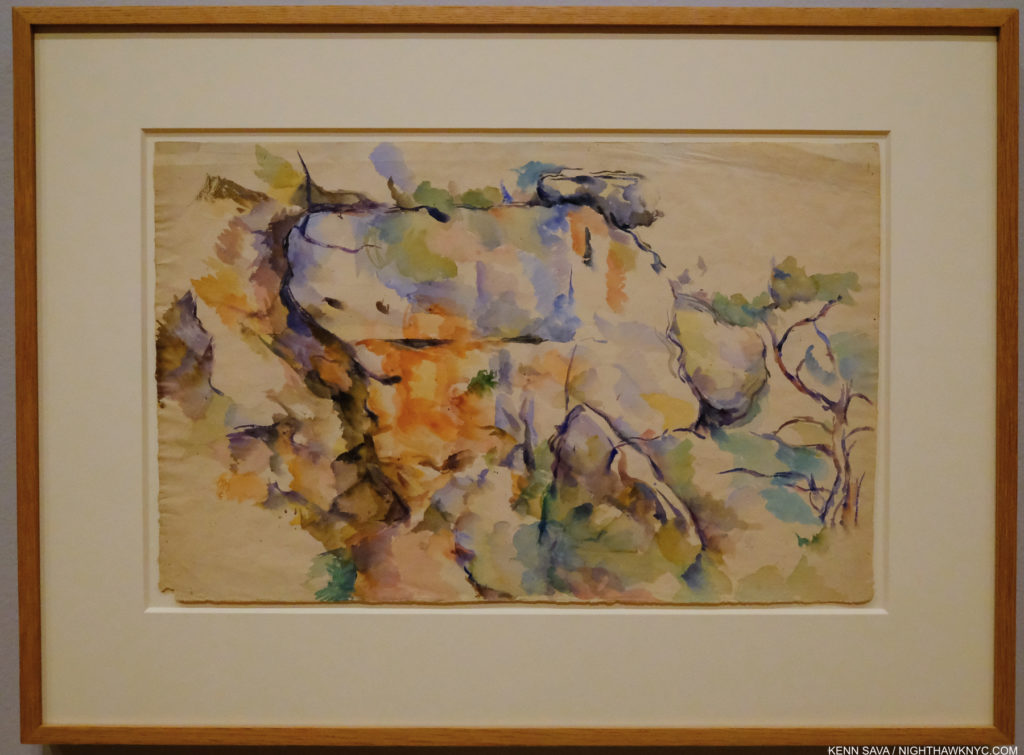
Rocks near the Chateau Noir, 1895-1900, Peincil and watercolor on paper. There is little in the world more solid than rock, but you’d never know it if you had only seen Cézanne’s series of Drawings of them near the Chateau Noir from 1895-1900. To me, they are a revolutionary marvel. Surface and forms dissolve right in front of our eyes.
As he put it all together, a MoMA wall card proved to be a revelation, particularly when thinking about his early training. In learning to draw the human body, one is taught to start by learning anatomy. Cézanne apparently applied this to his landscapes. “In order to paint a landscape well,” he is quoted on a wall card, “I first need to discover its geological structure.” It continues, “Cèzanne explored the relationship between rock and body throughout this series (of Drawings of rocks), in which the slabs take on the appearance of human bones and a cavern resembles the profile of a face.” And in this work, I see just that. The black lines form the “skeleton,” giving the piece a structure. Otherwise, the colors would be hanging in space.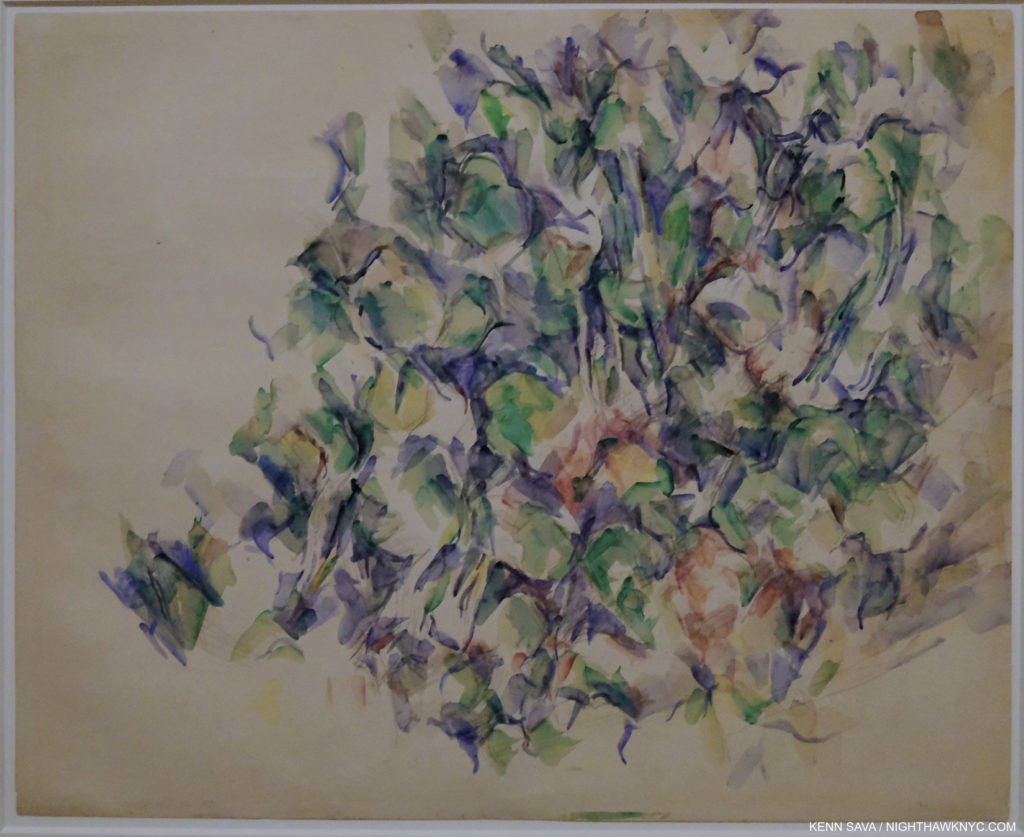
Foliage, 1895, Watercolor and pencil on paper. At first glance it looks like an unfinished jumble of lines and colors with a lot of empty white space. Here, Cezanne is depicting leaves blowing in the wind. in so doing, he’s also blurring the line between representation and abstraction, which was a good decade off. Nearby, a full room of Still Lifes take things to the height of immateriality.
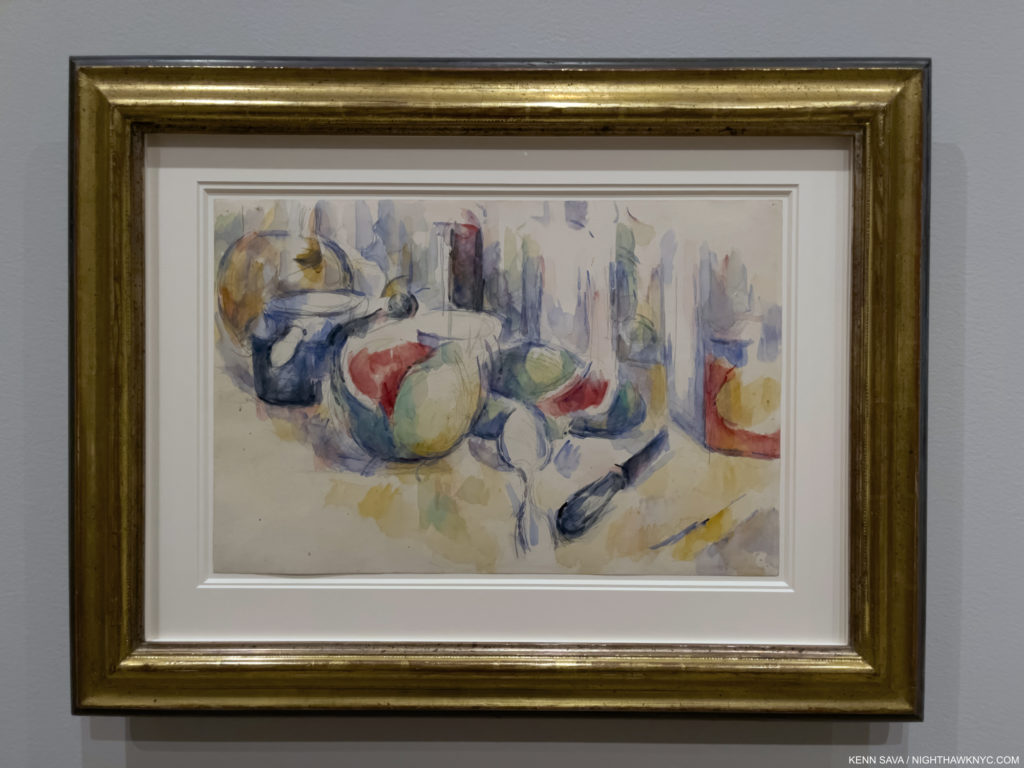
Still Life with Cut Watermelon, c.1900, Pencil and watercolor on paper. Of all the pieces on view, I’ve spent the most time studying this one. The table is “defined” with two brief lines, one a bit faint, on the right. The background is completely invisible and even the bottles in the back seem to be dissolving into space. Then, there’s the split open watermelon. At times it reminds me of an open heart.
His landscapes and his still lifes, with those famous arrangements of fruit on tables, have rightly garnered much of the attention and acclaim. They might originate from the gift of a basket of apple from his friend, Émile Zola in gratitude for Cèzanne’s rising to his defense against critics3, which would shed an entirely different light on them.
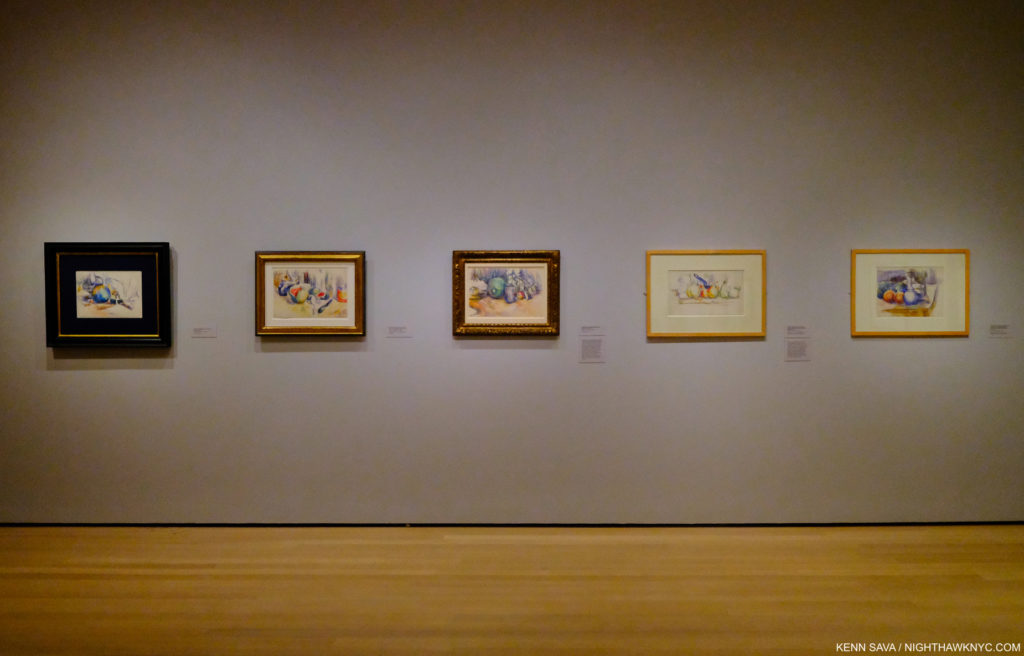
Wanna know why I still live in NYC? The chance to see incredible Art like this in shows like this. One of 4 walls in a large gallery of Cèzanne Still Lifes with fruit, including the one shown above, second from left here- some of the most innovative, visionary Drawings I’ve ever seen. (In some questionable frames.)
Seeing a large gallery full of them in 2021, they still seem completely fresh. As timeless as they are, Cézanne Drawing shows us there is much more to marvel at. Like his Portraits.
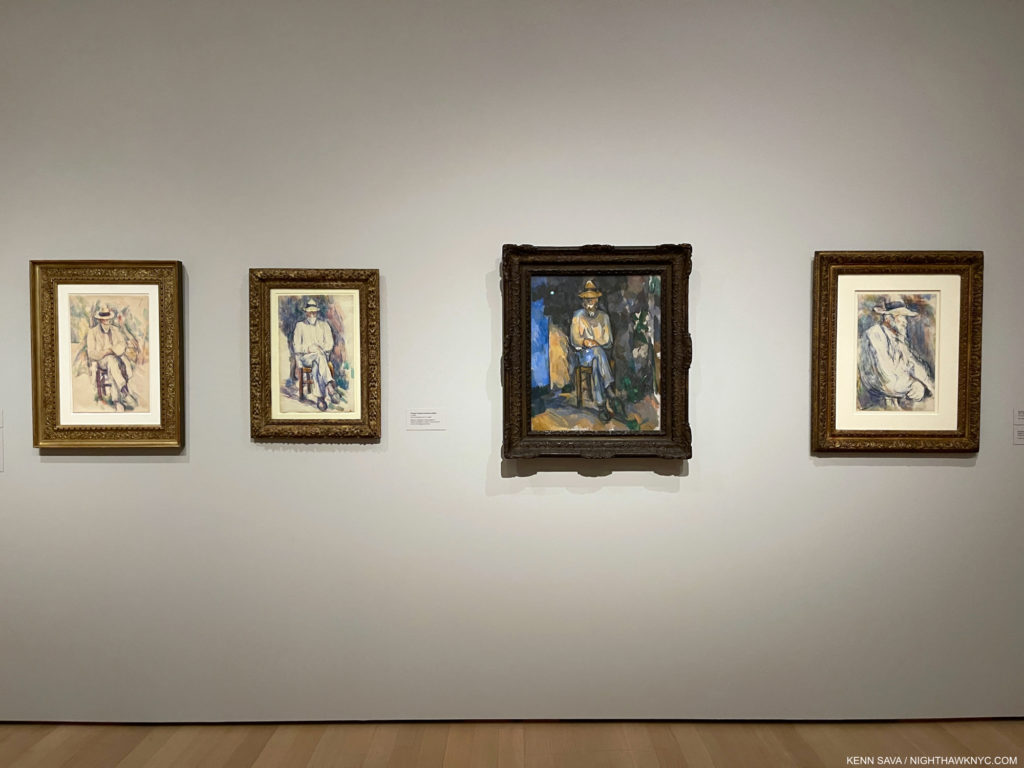
4 Portraits of the Gardener Vallier, 1904-6, Oil on canvas, 2nd from left, Pencil and watercolor on paper, the others. Endlessly fascinating, these 3 studies show remarkably similar poses to the Painting, yet with different backgrounds. They all share surprisingly undefined, nebulous, faces- unheard of in a traditional “Portrait.”
Though there are not many of them here, what is here makes a powerful impression, especially when seen along side, and in context with, his Drawings. Some years ago (in 2014), there was a show at The Met of Cézanne’s Portraits of his wife, Hortense Fiquet, aka Madame Cézanne, which captivated and mystified me at the same time.
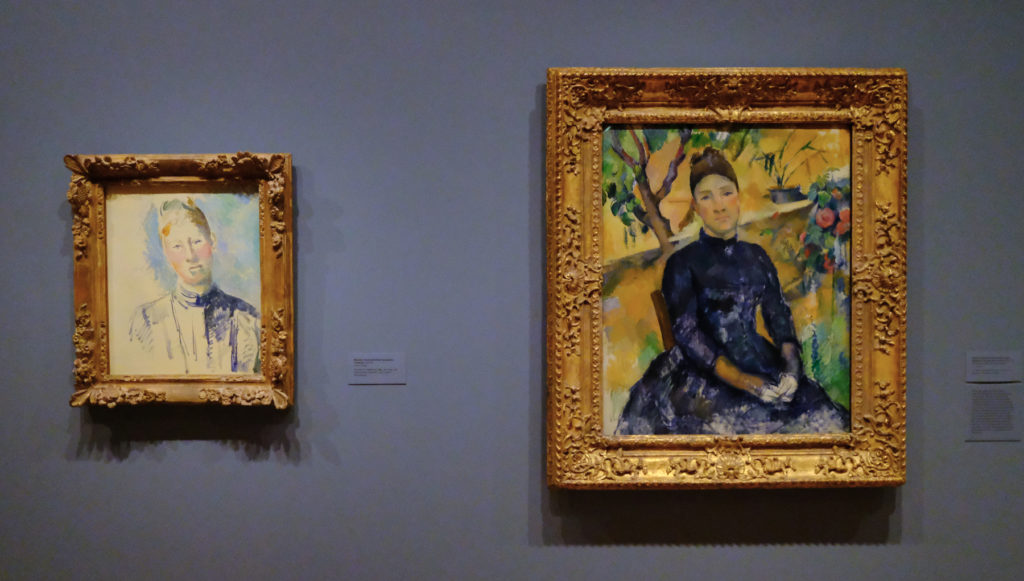
On loan from The Met, Madame Cèzanne in the Conservatory, 1891-2, Oil on Canvas, right, with a Study of her, from 1885-6, on loan from The Guggenheim, NYC, left. Cèzanne was very uncomfortable around female models (especially undressed) and rarely used them. He was very comfortable, however, having his wife pose for him. She patiently sat for him often and he created a fascinating body of work depicting her, these two examples rarely seen together.
The woman we see in those works was inscrutable. Yet the technique and use of color also fascinate, particularly in relation to his other work. I came away finally feeling that his portraits deserve more attention, even though they are “different” from what many expect from a “Portrait,” and not necessarily as accessible as his ever-popular Still Lifes or Landscapes.
Also, regarding Cèzanne’s Portraits, the show touches on the Artist’s use of Photographs, particularly as source material for MoMA’s famous Painting, The Bather.
He was far from alone in doing this at this time, yet he and the work he created using them have entirely escaped any sort of negative connotations for doing so that so many more recent Painters have suffered, including the recently passed Chuck Close. Which makes me wonder why it suddenly matters. It doesn’t! Photographs are, and have been for many Painters, something akin to a sketch. It’s plain to see Cèzanne didn’t slavishly copy the Photograph as much as it became a reference.
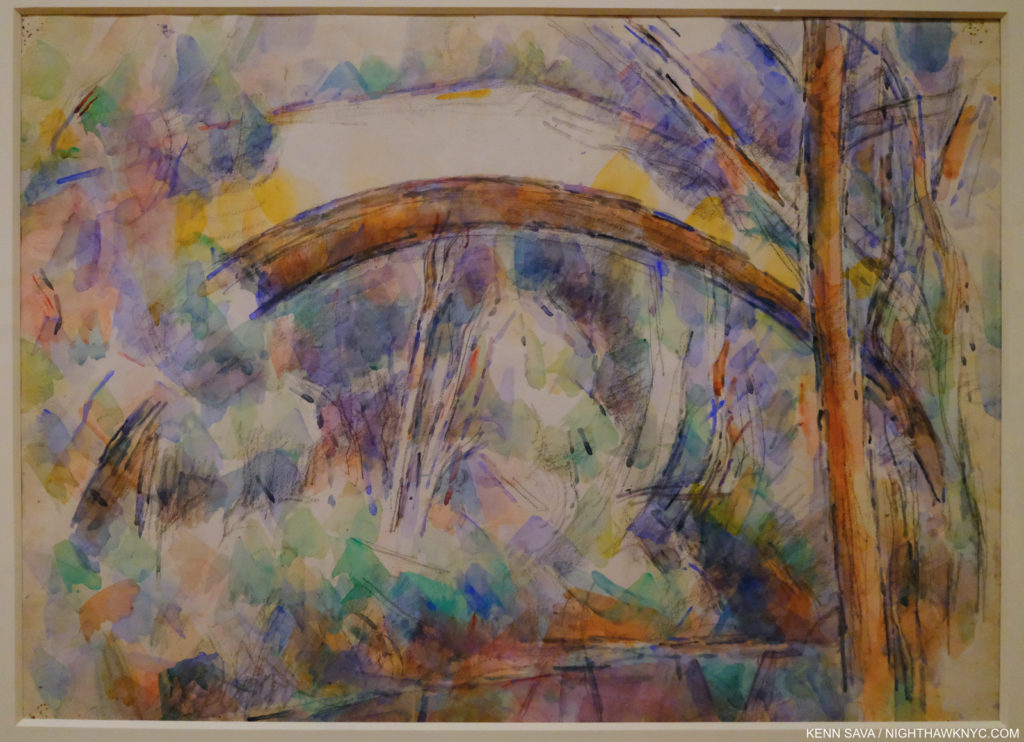
The Bridge of Trois-Sautets, 1906, Pencil and watercolor on paper. This late work is unlike anything in Art history to its time (even by Kandinsky or Munch), especially his own Oil Paintings. Compare it with Monet’s Footbridges around the same time. Its atmosphere stands diametrically opposed to those of the great Painters of atmospheric skies, Turner or Whistler, and different even from Van Gogh, and strikes me as a work that has much to offer Artists today4.
Now that they’ve seen the light of day, perhaps Cézanne Drawing will inspire some to build on the Drawing’s ahead-of-their-time innovations and help them achieve some of the wide-spread influence on Art his Paintings have had. Their time has come.
*-Soundtrack for this Post is “I Remember The Sun” by XTC from The Big Express, 1984.
“Squinting at the sun through eyes
Screwed up by a fireball
Tarmac on the road is soft
Chaff burns in a smoke wall
Yes, I’m weeping, a teardrop attack
I give emotion at the drop of a hat
When I remember days at school
I remember many things
But most of all, I remember the sun
Most of all, I remember the sun
Most of all, I remember the sun
Sun that worked on overtime
Fueled our bodies, kindled fire in our minds”*
NighthawkNYC.com has been entirely self-funded & ad-free for over 7 years, during which over 275 full length pieces have been published! If you’ve found it worthwhile, PLEASE donate to allow me to continue below. Thank you, Kenn.
You can also support it by buying Art, Art & Photography books, and Music from my collection! Books may be found here. Music here and here.
Written & photographed by Kenn Sava for nighthawknyc.com unless otherwise credited. To send comments, thoughts, feedback or propositions click here. Click the white box on the upper right for the archives or to search them. Subscribe to be notified of new Posts below. Your information will be used for no other purpose.
- Roger Fry, Cèzanne- A Study of His Development, P.3 ↩
- https://www.smithsonianmag.com/arts-culture/cezanne-107584544/ ↩
- https://www.smithsonianmag.com/arts-culture/cezanne-107584544/ ↩
- I must admit, having had glaucoma in both eyes, that in looking at later Cèzanne or Van Gogh I can’t help but wonder if either or both suffered from vision problems. Most likely it was just sheer genius at work. Given how much speculation surrounds Vincent, in particular still, I think we would have heard more about this by now. ↩
- https://www.smithsonianmag.com/arts-culture/cezanne-107584544/ ↩

